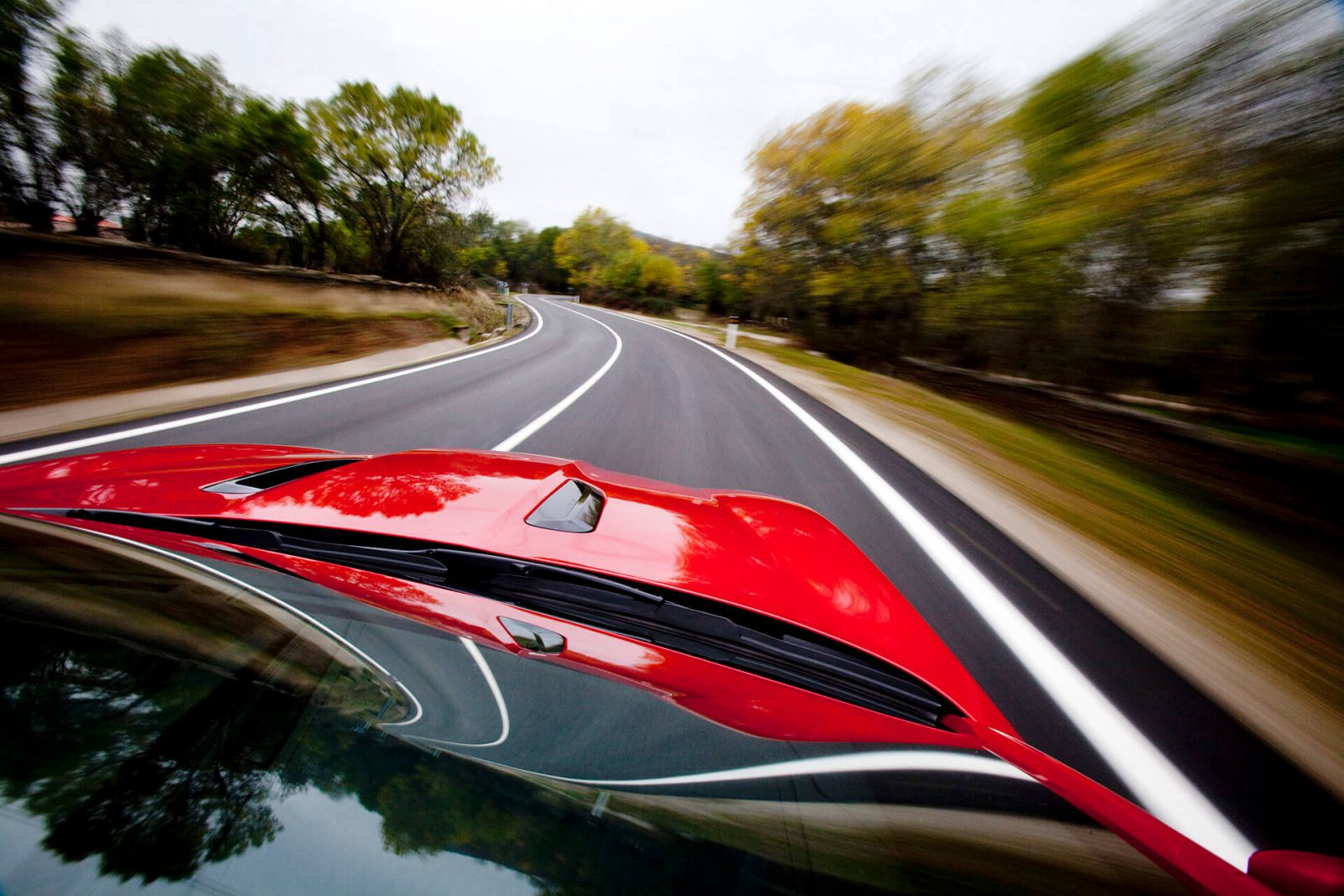Passion Meets Performance

Race Fuel Vs Pump Fuel: The Chemistry of High Performance
- Michael Febbo @ The Drive
- 26-Jan-21
- View source article
Using race gas can be as easy as finding a local gas station that happens to have a pump with 98 to 100 octane or even filling up at the local racetrack. But, to get the most out of it, selecting race gas from a specialty supplier can be compared to selecting a camshaft. The ideal cam for drag racing might be a terrible choice for an endurance event, even though they are going in the same type of engine. Racers should give just as much attention to their fuel choice based on the application. So how is race fuel different from pump gas and how do you find what’s right for you? The experts at Sunoco help sort out which specialty race gas is right for your car.
Sunoco has been involved in racing for over half a century. It is currently the official fuel supplier of NASCAR, NHRA and Trans Am – to name a few. The blue, red and yellow livery is iconic; indelibly linked to the legendary Mark Donahue driving Camaros in SCCA and Trans Am to one of the most recognizable race cars ever, the Porsche 917/30 in Can Am. Fifty-five years of racing history and education have transferred over to the fuel produced for both road and racing use.
The most obvious difference between its Top Tier approved street gas and race gas is the octane rating. Most street gas ranges from 87 up to 94 AKI, Anti-Knock Index, but more on how that’s calculated later. Sunoco’s selection of race fuels ranges from 95 up to 118 AKI.

What is Octane
The first thing you should probably know about octane; it’s a type of hydrocarbon produced during the petroleum refining process. The number you see on the gas pump, or on the outside of the can in the case of race gas, is the octane rating. In the United States, the most common rating is called AKI, or Anti Knock Index. That number is the average of two ways of measuring a fuel’s resistance to igniting due to compression and temperature. When you see (R+M)/2 for AKI, that is RON, Research Octane Number added to MON, Motor Octane Number with the sum divided by 2 to get the average. Both the RON and MON measurements are attained by testing fuel on a laboratory engine.
Octane rating is not a measure of the energy in the fuel. High octane fuel doesn’t burn hotter, doesn’t create more power by itself, doesn’t clean up your engine and won’t increase fuel economy. If you’re looking to clean carbon deposits and increase fuel economy, you are looking for a fuel with a good detergent package, which, coincidentally, Sunoco provides in its Ultratech™ additive package. Lastly, if your car is tuned for 87 octane fuel, there is very little advantage to be gained by using higher octane, especially on the street.
What is the difference with high octane fuels? A more stable fuel is necessary for naturally aspirated engines with higher compression ratios. Higher octane levels also allow forced induction engines to run more boost or higher intake temperatures.
Not all race gas is the same
Most enthusiasts have seen high octane race gas at stations, but if you aren’t driving a dedicated race car or spend a lot of time at a track, you may not realize how many choices there are in racing fuels. We talked to Sunoco about the 20 varieties it currently offers and how to choose what’s right for your application.
The first variable is, will this be used on public roads, and are those roads in California? If you are in California, and some other participating CARB states, you will need SS100. In non-CARB compliant states, your choice will be 260 GT. Both of these fuels are 100 octane, unleaded and will not damage emissions equipment. Like pump gas, they have 3.5 or 3.7 percent oxygen by weight, which means you can use them without having to richen or lean out your fuel mixture. If your car isn’t tuned for 100 octane, you won’t see a measurable increase in power. But street cars driven on the track tend to run hotter and modern engine computers will pull timing and in forced induction cars, boost, when they detect detonation. The higher octane will guard against detonation, which will keep you from losing power and offer a little extra insurance against engine damage.
If you don’t intend to use the racing fuel on the streets, Sunoco has another dozen and a half choices ranging in octane ratings from 95 to 118. Sunoco’s website has a fuel selector tool that will help narrow down your selection. There is also a tool to search for Sunoco retailers closest to you with the ability to search for anything from pump gas up to 118 octane race fuel. If you are going to run anything above street legal race gas, it is probably worth forming a relationship with your local dealer.
To prepare for that conversation, your race fuel dealer will want to know if you will run leaded fuel. Lead has been used in gasoline since the 1920s, first used to raise the octane rating and later it was also used to lubricate the engine's valve seats. Some vintage racers still swear by the lubrication properties of lead, but modern cars, and most vintage cars with modern rebuilds, use hardened valve seats making the lead unnecessary.
You will need to run unleaded fuel if your car uses a catalytic converter or oxygen sensors. Many sanctioning bodies require unleaded even without requiring any emissions control devices.
The next decision is the use of ethanol. Produced from natural biomass, usually corn, and is used to raise the octane rating when blended with gas. Ethanol is less energy dense than gasoline, so although it does raise octane, pound for pound, your fuel will have less energy content. Lastly, ethanol is an oxygen carrier, so at concentrations of around 10%, it will burn like street gas. Higher concentrations of ethanol will require richening up fuel mixtures or your engine will burn lean. Higher oxygenation in fuel means more available oxygen for combustion and will result in more power, especially for naturally aspirated engines. The tradeoff here is that fuel consumption will be higher to combust the extra oxygen.
If things aren’t nerdy enough for you yet, it’s time to talk about vapor pressure and distillation curves, which are used to determine boiling points for fuel. The boiling point for street gas is adjusted based on temperature and altitude where it’s being sold. Fuel has to be a vapor for it to burn, so in cold climates, the boiling point is lowered, and vapor pressure increased for cold starts. In hot climates, boiling point is raised, and vapor pressure decreased to prevent vapor lock.
The boiling point is only for gasoline to begin to boil. Different hydrocarbons will evaporate at different temperatures, which is where the distillation curve comes in. Street gas may have a boiling range from 80F to 400F, racing fuel being more specialized will have a much narrower range since race cars aren’t used in such varying conditions. This is where help from a local Sunoco supplier will help you determine the best fuel for your needs.

The advantage of quality race fuel and selecting the right one
Finding the right race fuel may not be easy, but selection and proper tuning can gain horsepower that would otherwise be left on the table. Running higher octane may allow for more aggressive ignition timing or running higher boost pressure. Using fuel with a higher oxygen content will be equivalent to running at a lower altitude. These are small differences that won’t be noticed at open track days, but for club racing all the way up to pros, it can mean the difference between the highest and lowest step on the podium.
